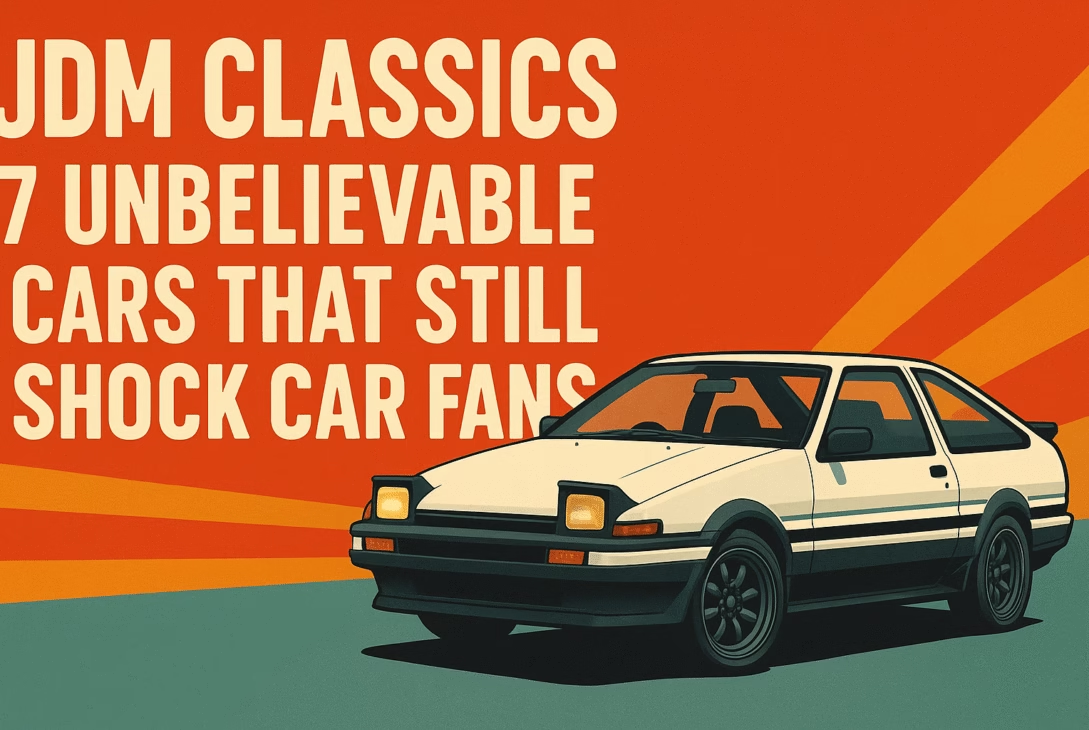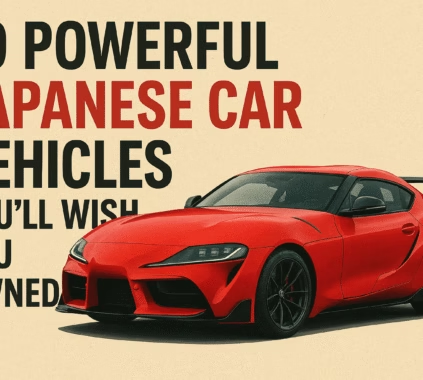Vehicles classified as “Japanese Domestic Market,” or JDM Classics, offer their own universe filled with unrivalled machines.
Most people who know or claim to know JDM classics would probably bring up the Supra, the Skyline GT-R, and the NSX.
Table of Contents
These Japanese vehicles achieved global recognition and status.
But, beyond these titans lurks an intriguing second layer of vehicles: cars that, for some reason, were ignored, misconstrued, or became so far advanced for their time that they still manage to stun fans.
This is the start of the actual treasure hunt. We are exploring the entire realm of JDM classics to uncover the engineering marvels that are often overlooked.
These are the vehicles that induce a double-take, with their ludicrous stories that touch upon the realms of fantasy.
From Kei cars that are quirky and feature gullwing doors to sedans that possess the power to outshine a supercar, we are about to delve into seven astounding vehicles that redefine the meaning people associate with JDM classics.
Prepare to have your views blown away.
Autozam AZ-1 The Gullwing Micro-Supercar
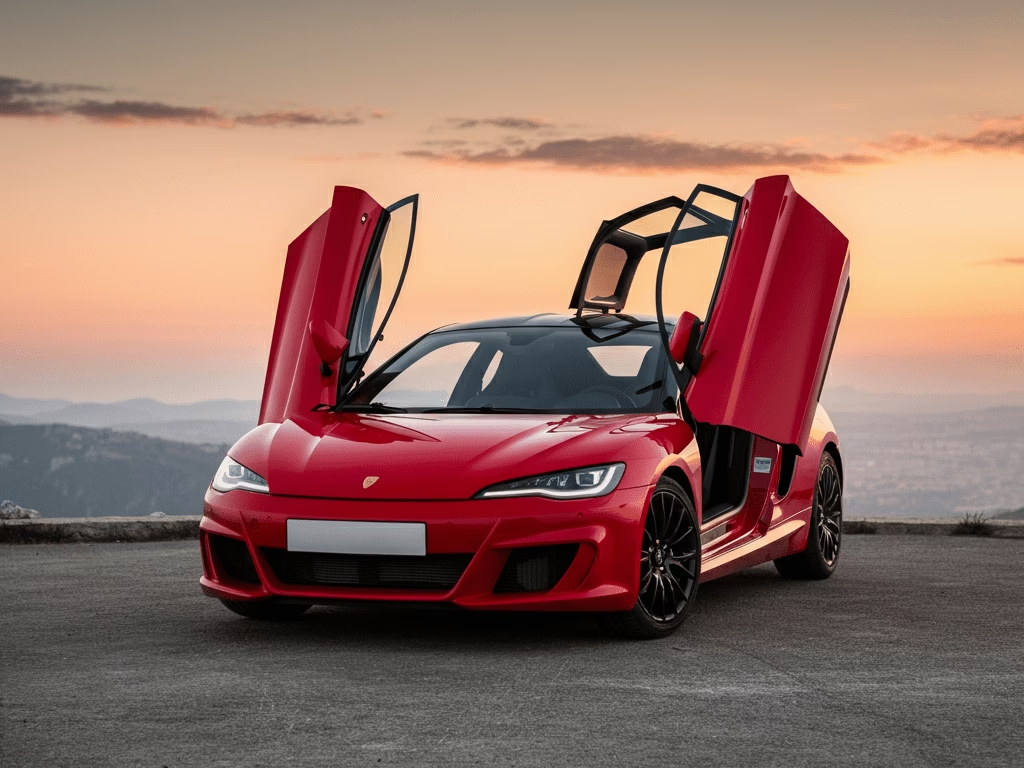
The Autozam AZ-1 is designed like a city-go-kart Lamborghini Countach, only smaller. Rather than Japan’s kei car regulations, which limit engine size and vehicle dimensions, this astonishing machine was born from the most audacious JDM classics ever produced.
A Pocket-Sized Exotic
Selling the sometimes-unconventional Suzuki AZ-1 under the Autozam brand is a significant underrepresentation of the JDM Classics .
The most remarkable aspect of the vehicle is the gullwing doors, which exude the same elegance as those found in high-end supercars.
The visual drama continues. The pop-up headlights lend the vehicle an even more aggressive stance, complemented by the strakes and the aggressive fiberglass body, as well as a massive rear wing, evoking a street-legal Group C race car.
The Suzuki Alto Works provided the AZ-1 with its wild exterior and a 657 cc mid-mounted turbocharged three-cylinder engine, which produced 63 hp.
Thanks to the kei car regulations, the power dropped to 63 hp. AZ-1 was still capable of performing like a champ due to its staggering 720 kg (1,587 lbs) weight.
The driving experience is low-slung and unrefined, due to the go-kart-like handling and open-sky roof, but it remains very enjoyable.
The car becomes an extension of the driver, creating a euphoric connection to the road.
Why it Wow’s Enthusiasts
A Kei car with gullwing doors, the concept is so crazy it just might work.
Compared to the rest of these economy turbo boxes, the AZ-1’s mid-engine, rear wheel drive configuration is pure JDM Classics car bliss.
A staggering 4,400 to 5,400 units produced during the vehicle’s lifetime make it a JDM classics from the 1990s.
The Autozam AZ-1 showcases the imagination and engineering liberality of the bubble economy period of Japan.
It’s still an amazing and surprising oddity proving that big concepts with untamed designs can easily come in small containers.
Mitsubishi Galant VR-4 The AWD Turbo Sedan That Started It All
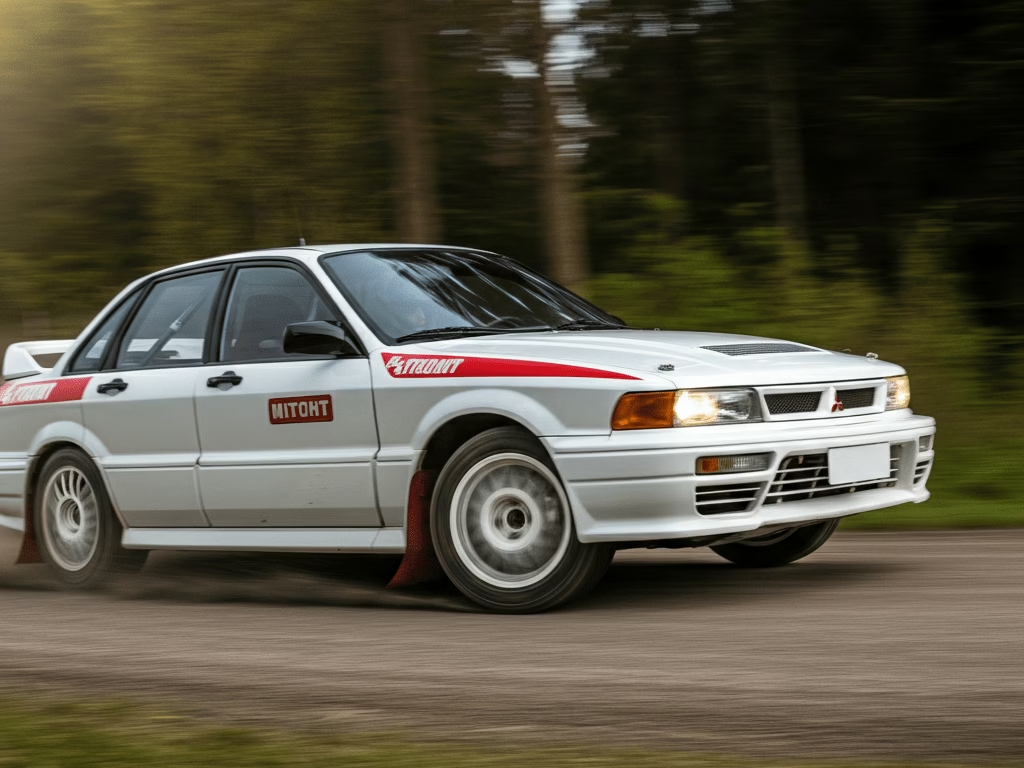
To understand how the Lancer Evolution came to dominate the streets and rally racing, you should first learn about the Mitsubishi Galant VR-4.
The Galant VR-4, an unassuming sedan, was Mitsubishi’s first All Wheel Drive, turbocharged, and it set the stage for the evolution of the legendary Evo.
It remains one of the most pivotal and often forgotten JDM classics of its time.
The Original Rally Hero
Mitsubishi faced a significant challenge in the late 1980s. The Sixth Generation Galant VR-4 was Mitsubishi’s first attempt at competing in the World Rally Champs.
It was built with an astonishing technological revolution they took a basic Nissan family sedan. The core of this vehicle was the 4G63 T engine.
It had the same 2.0-liter, turbocharged, four-cylinder engine that powered the Lancer Evolution for nine generations.
As for the Galant VR-4, it was not only about the sheer power it possessed. Full-time All Wheel Drive and optional four-wheel steering systems added sophistication that was well appreciated.
The sedan could reach 0 to 60 miles per hour in an astounding seven seconds, a remarkable feat that demonstrated utter dominance over the competition during that era.
What Makes It Stand Out
- The Evo’s Predecessor: It is relatively well known that the Lancer Evo was developed in part thanks to the Galant VR-4. The engine and the all-wheel drive system were taken directly from it.
- Sleeper Status: The subtle and angular design does not hint at the real potential performance it could offer. It’s one of the ultimate JDM classics made for surprising rivals at a stoplight.
- Innovator: In the late 1980s, it was novel to find a family sedan with 4-wheel drive and 4-wheel steering.
The Galant VR-4 is not just a mere footnote in Mitsubishi’s story. It was a heavyweight rally car and a pioneer of performance sedans that laid the foundation for a great automobile empire. His WRC stories can be found all over the internet, particularly on motorsport.com.
Toyota Sera The Coupe with Butterfly Doors

If you thought the Autozam AZ-1 had cool doors, you should look at the Toyota Sera.
This Toyota Starlet-based, small coupe had a design feature so futuristic and influential that it caught the eye of one of the world’s most famous supercar designers.
The Glass Canopy with Butterfly Wings
The Sera has the most stunning feature: the butterfly doors. Unlike gullwing doors, which hinge at the roof, the Sera’s doors hinge at the bottom of the A-pillar and open upwards and forwards.
Alongside the heavy glass canopy that wraps the cabin, this design provided the Sera with a unique and airy cockpit with unmatched visibility.
The engineering was impeccable, to put it mildly. The doors could be opened in an opening that was not much wider than the car, thanks to advanced gas struts, making them surprisingly practical.
The design of the doors was so practical that it directly inspired Gordon Murray when designing the infamous McLaren F1.
In the Sera, you could say that it was a bit more modest. It was powered by a single 1.5-liter inline-four engine, which produced approximately 108 horsepower.
It was never masked as a speed demon, as that was not its purpose. It was a concept car designed for roads, a moving testament to design originality.
This is what makes it a one-of-a-kind JDM classics
Why It Still Amazes
- McLaren F1 Inspiration: The fact that a small Toyota coupe designed the doors for a record-holding hyper car is a super interesting fact in the automotive world.
- Car of the Future: Derived from the 1988 AXV-II concept car, the design for the Sera is a wild one, but it still retains a few of the alterations made for mass production.
- Unique Driving Experience: Sera’s huge glass dome and spectacular doors make driving it feel like flying a next-generation fighter.
Nissan Pulsar GTI-R The “Baby Godzilla”

Nissan Pulsar GTI-R, a car built for the WRC homologation, is the answer to squeezing the performance of a Skyline GT-R into a tiny hatchback, which earned it the nickname “Baby Godzilla”.
This pocket rocket was made to compete with rally legends like the Lancia Delta Integral and Ford Escort Cosworth.
Hatchback Dressed as GT-R
The GTI-R’s heart is the SR20DET, a 2.0-liter turbocharged engine with 227 horsepower and 210 lb-ft of torque.
The GT-R’s design, however, features a lightweight hatchback that accelerates from 0 to 60 mph in five seconds, a rarity once matched by Ferraris of the past.
The powerful performance was perfectly matched by its menacing looks. The most characteristic feature is the hood scoop.
The ‘scoop’ feeds air to a top-mounted intercooler. A larger rear wing was then added to the Pulsar GTI-R, enhancing its already aggressive look.
The GTI-R was and remains one of the most aggressive-looking JDM Classics to emerge from the ’90s hot hatch era.
Why It’s a Shocking Classic
- Supercar-Slaying Performance: The early 90s had a slim chance of outpacing a GTI-R in a straight line, and a slim chance of keeping pace with one on a curved road.
- An example of a true custom limited edition: it’s a limited edition and was specifically built to win in rallies. The high demand for collectors proves how sought after its simplicity is.
- Obliterated potential: It’s no secret that the WRC wasn’t a success for Nissan, but the GTR’s raw power, coupled with the king of rally’s reputation, puts it on a pedestal in the eyes of the true car enthusiasts.
Suzuki Cappuccino, a perfectly proportioned roadster
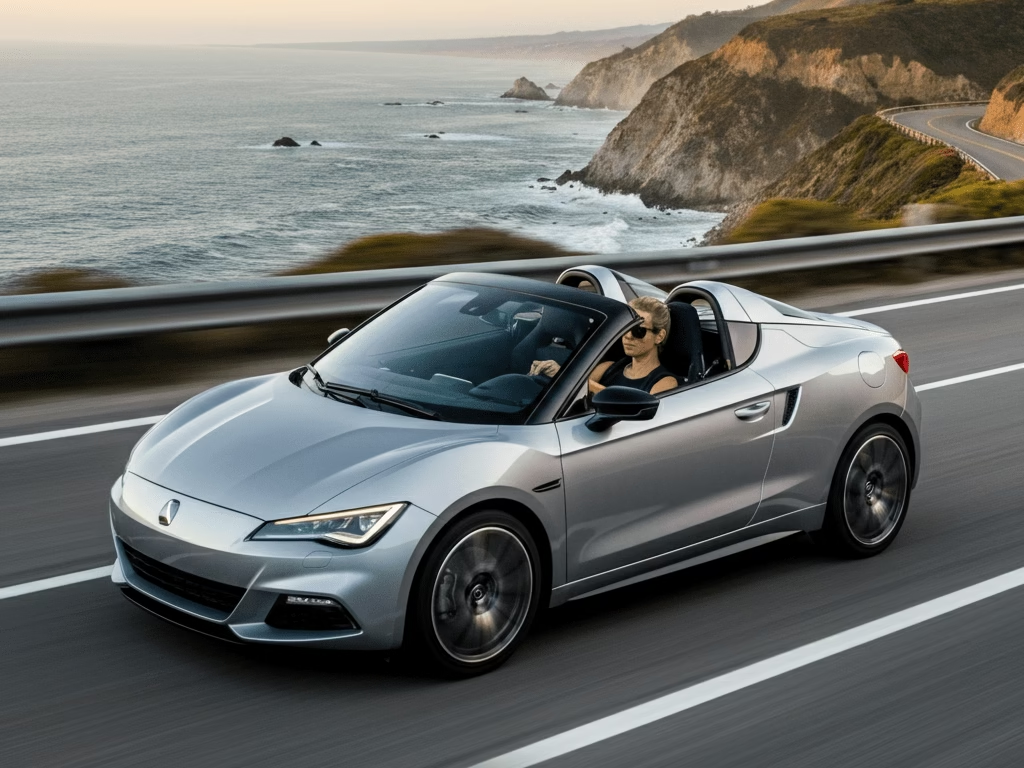
The cappuccino is, yet again, another piece of art from the kei car category. It is a front-engine, Rear Wheel Drive, roadster that proves you don’t need gobs of power to have a world of fun.
Twisties, straight roads, and hills – this tiny sports car brings the joy of driving that many modern cars lack.
A Study in Packaging
The cappuccino is a wonder of engineering. It features a classic sports car layout – engine in the front, drive wheels in the back and is perfectly balanced, with 50/50 weight distribution.
The turbocharged 3-cylinder engine claims a modest 63 hp. The joy of driving the Cappuccino is in its astonishingly low weight of just 725kg (1598 lbs).
One of the most ingenious engineering feats is the 3-piece removable hardtop. The cappuccino can be configured in a variety of ways:
- A closed coupe
- A T-top
- A targa-top
- A full convertible
The roof panels can be stored in the trunk, making it a charming and highly versatile little roadster. This is why, in a sea of other JDM classics, it stands out the most.
What is the Reason for the Shock
- The multi-configuration roof accommodates up to 4 cars, offering remarkable versatility.
- Due to the 50/50 weight distribution and Rear Wheel Drive, the driving comfort and dynamics are perfect, akin to a tiny MX-5.
- It is a reminder of the pure joy of driving, fun that is untethered from the dependency of horsepower.
Century Toyota Chariot of the Emperors
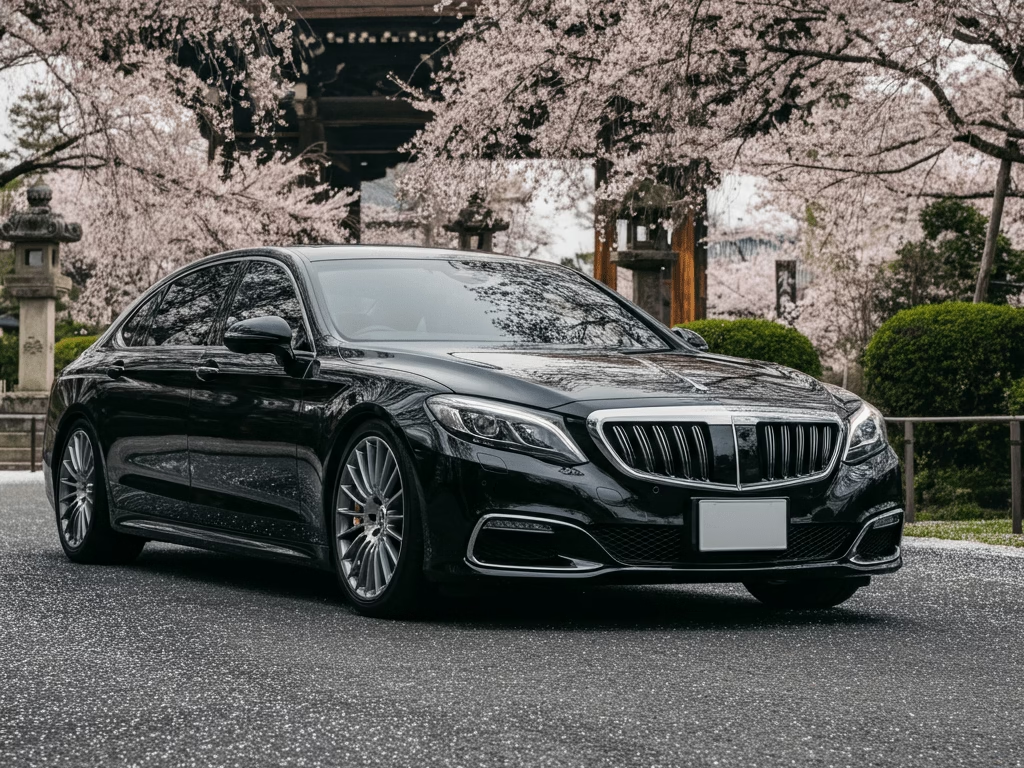
Most JDM classics grab attention for performance or quirky design the Toyota Century, in stark contrast, is the epitome of luxury and discretion.
It is, as the saying goes, not a ‘show car’ it is an ‘arrive car’. It has been the preferred mode of transportation for the Emperor of Japan, Prime Ministers, and elite CEOs for decades.
Japan’s Only V12
The most notable feature about the 2nd generation Century, launched between 1997 and 2017, is that it is Japan’s only one.
Unlike most V12 Engines, the 5.0-liter 1GZ-FE was not designed for raw power.it outputs a ‘gentlemen’s agreement’ of 276 horsepower.
Its true purpose, however, was to operate with near-zero vibrations.
The Century is a car built without compromise. The inside is often exclusively dressed in wool cloth, a material considered more luxurious and quieter than leather in Japanese culture, as well as other features, such as massaging seats.
Unlike most cars, the Century is designed for the back-seat passengers, who are ultimately the most comfortable passengers, as they are treated to lace privacy curtains.
Why It’s an Unbelievable Classic
- The V12 Engine: Many things go with a Japanese V12, yet a myth is still an engine, and this ultra-exclusive sedan has one of those.
- Understated Presence: Unlike Rolls-Royce and Bentley, the Century is inconspicuous. It’s finer than those, and its quality shines through without an ostentatious badge.
- Hand-Crafted Perfection: Astonishing levels of craftsmanship among JDM classics put this vehicle in its very own category. For more information on its craftsmanship, extensive updates are available on Road & Track.
The Isuzu VehiCROSS the Concept Car That Escaped

With its alien, futuristic style, the Isuzu VehiCROSS appears to be designed to roam the streets of a futuristic science fiction world.
The production variant launched in 1997 is incredibly faithful to the 1993 concept vehicle it was based on.
The only major difference is the rugged styling, and that was an improvement.
A Radical Off-The-VehiCROSS is a leading off-road vehicle that resembles a vehicle capable of being used on the moon.
The moon Packed with a powerful 3.5-litre V6 engine, remarkable Torque-On-Demand (TOD) 4WD, and external-reservoir shock absorbers, it was built on a shortened Isuzu Trooper chassis that screamed sci-fi.
It was absolutely an off-roading disguise. Its most controversial and iconic design element is the extensive use of unpainted plastic body cladding, which covers the entire lower half of the vehicle.
This was not just for appearance but was also intended to be durable and scratch-resistant for use in tracking.
Along with the aggressive and unique unpainted titanium hood insert, the VehiCROSS’s distinctive front fascia remains polarizing and futuristic to this day.
Shocks and Awes
From Concept to Production: a few vehicles make the leap from concept to showroom, often missing key features. Isuzu’s boldness still shocks.
Exceeding competitors with technology: Isuzu’s TOD 4WD system, combined with high-performance shocks, performs outstandingly.
Over 2 decades later, the VehiCROSS remains the only one of its kind still driving on the road is truly an oddball, which is why it is a loved JDM classics.
These seven cars showcase how many people are unaware of the true richness and diversity of JDM classics
They capture a pivotal moment in Japanese car-making when manufacturers were bold enough to think outside the box and produce and while we might not recall each one as readily as we do a Supra or an NSX, the cars we are about to discuss not only greatly shaped car culture, but rest assured, the influence they possess is equally as profound equally as deep.
FAQ’S Concerning JDM Classics
Q1: What does JDM mean with cars in context?
JDM refers to Japanese Domestic Market. It refers to cars that were developed for and sold in Japan. Many JDM cars, especially classics from the 80s and90s, possess attributes unrelated to other countries, which makes them popular among car lovers across the globe.
Q2: What does the term JDM classic mean?
A car is referred to as JDM classic if it is an older vehicle from the Japanese Domestic Market and holds prominent socio cultural value. This especially applies to cars from the 80s,90s and early 2000s that are recognized for the astounding performance, pioneering tech and fascinating designs such as the ones we showcased in the article.
Q3: Are all Japanese cars JDM?
No, not all cars produced by Japanese companies such as Toyota or Nissan are JDM in nature. A car is only JDM if it was actually manufactured and sold to Japan. For instance, a Toyota Camry sold in the US is a Japanese car, however it is not classified as JDM because it was designed and manufactured to suit US market.
Q4: What about the Autozam AZ-1 makes it one of the smallest JDM classic cars?
The Autozam AZ-1 is classified as a ‘kei car’, which is a specific category of smaller cars in Japan. This category of kei cars are government regulated in regards to size as well as the size of the engine which is no more than 660cc. This category was designed to provide cheap and practical cars in the congested cities of Japan. These rules led to the creation of superb and quirky JDM classics such as the AZ-1 and Suzuki Cappuccino.
Q5: With regards to the Toyota Century, what does the term ‘gentleman’s agreement’ revolve around?
The gentleman’s agreement was said to have been made during the late 80s and mid 2000s and concerned Japanese car manufacturers and their advertised horse power for their production cars, which at the time was limited to 280 PS, which is about 276 horsepower. Most cars, such as the Toyota Century V12, were said to be ‘underpowered’ as it was claimed they were certified around that figure to avoid a horsepower ‘war’ that was deemed domestic.
Q6: Is it difficult to own and maintain JDM classics today?
Although incredibly rewarding, owning a JDM classic has its challenges. For a very rare car, there may be dire obstacles in obtaining complete and functional replicas, and it may even involve transactions with vendors from Japan. Moreover, there is a supportive global community with and dedicated repair specialists, giving superb help to pretty much every car owner.
Q7: Which car in the article is best known for its ‘sleeper’ status? Which part of the car article is most known for its ”sleeper” status?
On our list, the Mitsubishi Galant VR-4 is the final and the most ‘sleeper’ car. Its otherwise ordinary, boxy, family sedan shape is very much restrained in the fact that it has a turbo engine and a sophisticated all-wheeled driven system taken from the rally. It’s one of those JDM classics that, when the time is suitable, tends to expose itself with a shocking performance that is generally unexpected.

